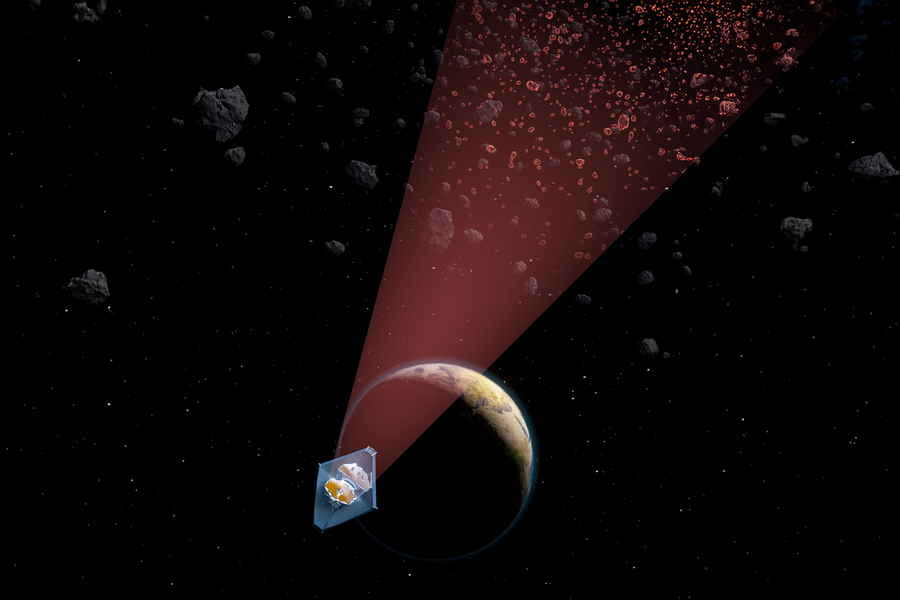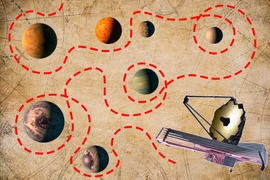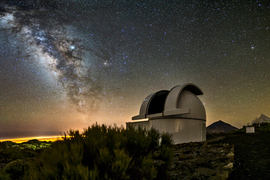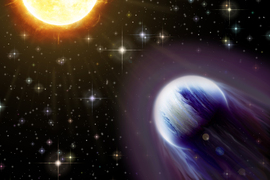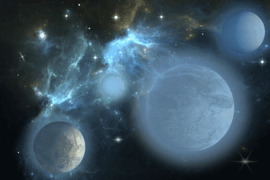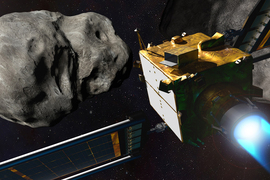The asteroid that extinguished the dinosaurs is estimated to have been about 10 kilometers across. That’s about as wide as Brooklyn, New York. Such a massive impactor is predicted to hit Earth rarely, once every 100 million to 500 million years.
In contrast, much smaller asteroids, about the size of a bus, can strike Earth more frequently, every few years. These “decameter” asteroids, measuring just tens of meters across, are more likely to escape the main asteroid belt and migrate in to become near-Earth objects. If they make impact, these small but mighty space rocks can send shockwaves through entire regions, such as the 1908 impact in Tunguska, Siberia, and the 2013 asteroid that broke up in the sky over Chelyabinsk, Urals. Being able to observe decameter main-belt asteroids would provide a window into the origin of meteorites.
Now, an international team led by physicists at MIT have found a way to spot the smallest decameter asteroids within the main asteroid belt — a rubble field between Mars and Jupiter where millions of asteroids orbit. Until now, the smallest asteroids that scientists were able to discern there were about a kilometer in diameter. With the team’s new approach, scientists can now spot asteroids in the main belt as small as 10 meters across.
In a paper appearing today in the journal Nature, the researchers report that they have used their approach to detect more than 100 new decameter asteroids in the main asteroid belt. The space rocks range from the size of a bus to several stadiums wide, and are the smallest asteroids within the main belt that have been detected to date.
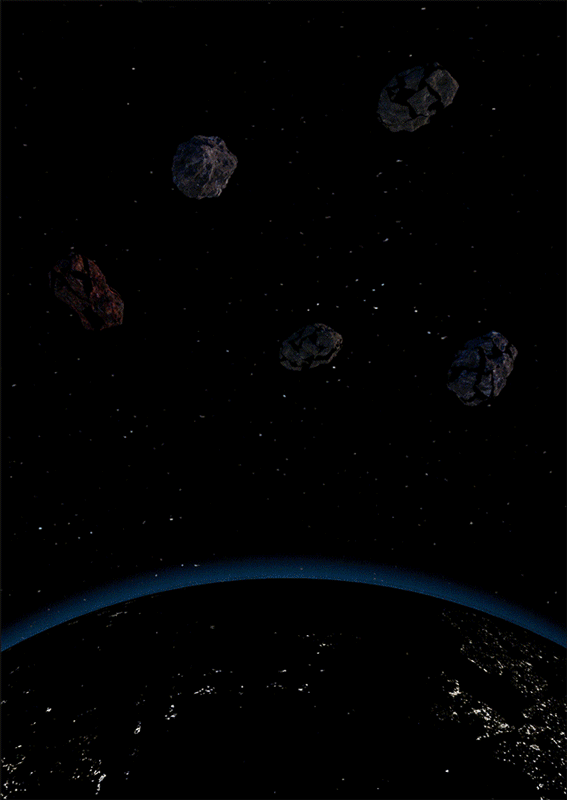
Credit: Ella Maru/Julien de Wit
The researchers envision that the approach can be used to identify and track asteroids that are likely to approach Earth.
“We have been able to detect near-Earth objects down to 10 meters in size when they are really close to Earth,” says the study’s lead author, Artem Burdanov, a research scientist in MIT’s Department of Earth, Atmospheric and Planetary Sciences. “We now have a way of spotting these small asteroids when they are much farther away, so we can do more precise orbital tracking, which is key for planetary defense.”
The study’s co-authors include MIT professors of planetary science Julien de Wit and Richard Binzel, along with collaborators from multiple other institutions, including the University of Liege in Belgium, Charles University in the Czech Republic, the European Space Agency, and institutions in Germany including Max Planck Institute for Extraterrestrial Physics, and the University of Oldenburg.
Image shift
De Wit and his team are primarily focused on searches and studies of exoplanets — worlds outside the solar system that may be habitable. The researchers are part of the group that in 2016 discovered a planetary system around TRAPPIST-1, a star that’s about 40 light years from Earth. Using the Transiting Planets and Planetismals Small Telescope (TRAPPIST) in Chile, the team confirmed that the star hosts rocky, Earth-sized planets, several of which are in the habitable zone.
Scientists have since trained many telescopes, focused at various wavelengths, on the TRAPPIST-1 system to further characterize the planets and look for signs of life. With these searches, astronomers have had to pick through the “noise” in telescope images, such as any gas, dust, and planetary objects between Earth and the star, to more clearly decipher the TRAPPIST-1 planets. Often, the noise they discard includes passing asteroids.
“For most astronomers, asteroids are sort of seen as the vermin of the sky, in the sense that they just cross your field of view and affect your data,” de Wit says.
De Wit and Burdanov wondered whether the same data used to search for exoplanets could be recycled and mined for asteroids in our own solar system. To do so, they looked to “shift and stack,” an image processing technique that was first developed in the 1990s. The method involves shifting multiple images of the same field of view and stacking the images to see whether an otherwise faint object can outshine the noise.
Applying this method to search for unknown asteroids in images that are originally focused on far-off stars would require significant computational resources, as it would involve testing a huge number of scenarios for where an asteroid might be. The researchers would then have to shift thousands of images for each scenario to see whether an asteroid is indeed where it was predicted to be.
Several years ago, Burdanov, de Wit, and MIT graduate student Samantha Hasler found they could do that using state-of-the-art graphics processing units that can process an enormous amount of imaging data at high speeds.
They initially tried their approach on data from the SPECULOOS (Search for habitable Planets EClipsing ULtra-cOOl Stars) survey — a system of ground-based telescopes that takes many images of a star over time. This effort, along with a second application using data from a telescope in Antarctica, showed that researchers could indeed spot a vast amount of new asteroids in the main belt.
“An unexplored space”
For the new study, the researchers looked for more asteroids, down to smaller sizes, using data from the world’s most powerful observatory — NASA’s James Webb Space Telescope (JWST), which is particularly sensitive to infrared rather than visible light. As it happens, asteroids that orbit in the main asteroid belt are much brighter at infrared wavelengths than at visible wavelengths, and thus are far easier to detect with JWST’s infrared capabilities.
The team applied their approach to JWST images of TRAPPIST-1. The data comprised more than 10,000 images of the star, which were originally obtained to search for signs of atmospheres around the system’s inner planets. After processing the images, the researchers were able to spot eight known asteroids in the main belt. They then looked further and discovered 138 new asteroids around the main belt, all within tens of meters in diameter — the smallest main belt asteroids detected to date. They suspect a few asteroids are on their way to becoming near-Earth objects, while one is likely a Trojan — an asteroid that trails Jupiter.
“We thought we would just detect a few new objects, but we detected so many more than expected, especially small ones,” de Wit says. “It is a sign that we are probing a new population regime, where many more small objects are formed through cascades of collisions that are very efficient at breaking down asteroids below roughly 100 meters.”
“Statistics of these decameter main belt asteroids are critical for modelling,” adds Miroslav Broz, co-author from the Prague Charles University in Czech Republic, and a specialist of the various asteroid populations in the solar system. “In fact, this is the debris ejected during collisions of bigger, kilometers-sized asteroids, which are observable and often exhibit similar orbits about the Sun, so that we group them into ‘families’ of asteroids.”
“This is a totally new, unexplored space we are entering, thanks to modern technologies,” Burdanov says. “It’s a good example of what we can do as a field when we look at the data differently. Sometimes there’s a big payoff, and this is one of them.”
This work was supported, in part, by the Heising-Simons Foundation, the Czech Science Foundation, and the NVIDIA Academic Hardware Grant Program.
